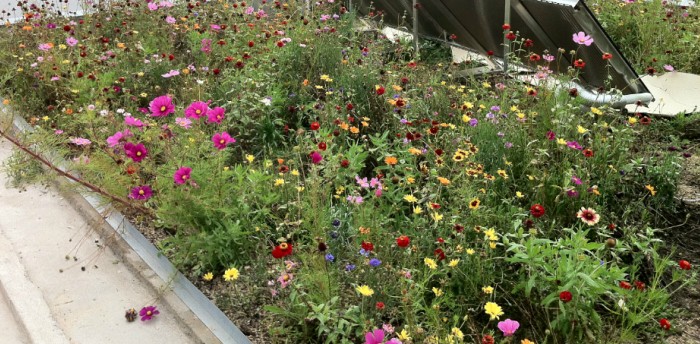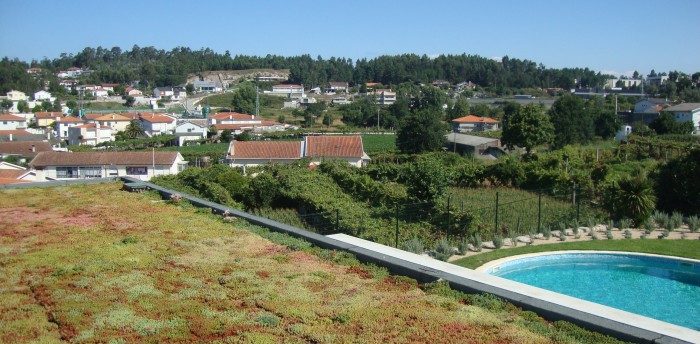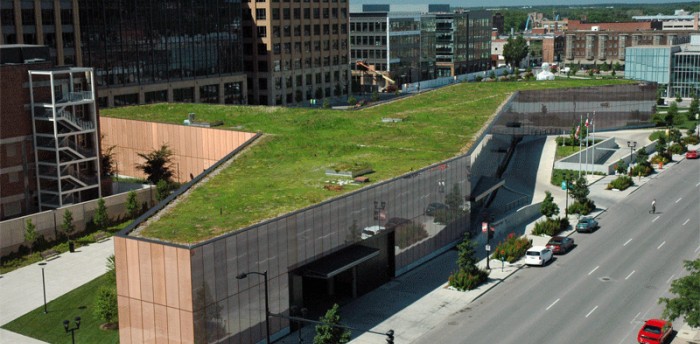Neoturf is the largest Portuguese company with expertise in technologies for implementation of green roofs. Performs green roofs for any type of use: intensive, extensive and semi-intensive, since the 0 º to 30 º tilt.
Neoturf installs systems from various brands. The selection of the most convenient system will depend on: building type, climate zone and vegetation selected to install. The systems are not intrusive, which guarantees full protection of building waterproofing.
Neoturf is a certified installer of ZinCo Green Roofs systems. ZinCo is a German multinational company, pioneer with over 30 years experience in roofs. Their systems have the greatest assurance on the market.
Neoturf technicians have participated in projects in Portugal and abroad, especially in Germany, where this option has numerous constructive examples and is constantly evolving.
Green roof contextualization
The first records of roof gardens appear in the ancient civilizations of the Tigris and Euphrates. One example were the hanging gardens of Babylon in the 7th and 8th century before Christ.
However, only the appearance of modern techniques of construction and installation allowed extending the application of this type of gardening
It was only in the 20th century that construction techniques made flat roofs as rule in the majority of buildings in urban areas. These roofs, whose structural system now enables larger loads, led to the development and expansion of green roofs.
Nowadays greenroofs are a growing business, represented by a powerful and organized industry. On the other hand, the public recognition of the huge advantages of this type of installation, meant that some governments have already established incentives for those who take this constructive solution.
The new techniques recognize two types of classification: intensive green roofs and extensive green roofs.
The intensive green roofs are similar to the old gardens in the roofs. It is expected that people use this garden as a conventional garden. Plants are kept individually as if they were installed in a garden at the base of the building. The depth of the soil profile is at least 15 cm but, nowadays we use lighter substrates in order to minimize the load on the building structure. The intensive roofs are characterized by simpler lawns and ground cover plants, options that require regular maintenance. In this type of installation the major difference to the old ones is the use of smaller profiles substrate, then lower installation costs. This roof garden are prepared for access and use, but typically are performed as a landscape for observing from the interior of the building.
The extensive green roofs are not performed for regular human use, and often are not even visible. The plants are treated by mass, and maintenance operations performed by the whole area (eg. cutting meadow). In any case, this type of cover is used to reduce maintenance to a minimum. The depth of the soil profile varies between 2 and 15 cm thus reducing considerably the increase of load on the building structure.
The "brown roofs" are another concept of coverage that is being developed. Refers to roofs that are covered with substrate but no plant material was purposely installed. Only creates space for spontaneous biodiversity go occupying their spaces.
Another more recent concept has been developed: semi-extensive green roof. The philosophy of minimal ecological input is respected, the substrate utilized is lightweight profiles and between 10 and 20 cm, enabling a wider choice of species for use. This concept tries to show that there is no reason for the extensive coverage are not visitable and usable, since designed for such.
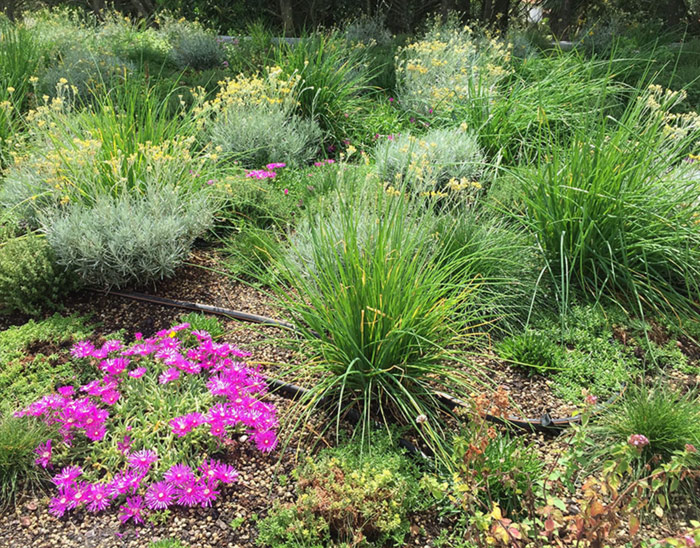
Advantages of comfort and aesthetics
When designed for recreational and leisure activities, green roofs are active recreational areas in urbanized areas, where little floor space remains for green areas.
They are an alternative to conventional green spaces taking advantage of their limited access, to become a more private and secure place, thus ensure great comfort to its users.
Food production. There is growing concern about food quality and food production standards. One of the issues raised is the cost of energy and transport pollution (from long distances) of such products. Green roofs provide an excellent opportunity for the production of vegetables and other products.
As for the aesthetic advantages are easy to understand the profound changes in the landscape that would start up all those roofs, a few buildings visible to others, began having gardens. Instead of observing the asphalt screens and roof insulation, people would begin to enjoy the natural landscapes that convey feelings of comfort. Even the covers that do not have access, but are clearly visible, contribute to the therapeutic effect which green plants and nature provoke in people living on these spaces. These therapeutic effects include reduced stress, reduced blood pressure, reduced muscle tension and increased positive feelings (Ulrich and Simmons 1986).
Environmental Advantages
The extended green roofs, are not designed to be used, and as such they are isolated from people. This allows to create habitats undisturbed for plants, birds and insects.
Also it should be noted that the substrates used in green roofs have reduced fertility and the key factor is the percentage of inert material ensuring the drainage. Under these conditions of reduced fertility attend to an increase in the number of species, since there are no conditions sufficient for proliferation of highly dominant species. Thereby, more plant species coexisting in the same habitat, biodiversity is increased, also reflecting in an increase in the number of birds and insects (Grime 2002). It is certain that in continental climates the substrate can freeze in winter, preventing the insect and bird life at that time. However, during the growing season, the roofs offer authentic ecological islands where insects and birds can rest, feed and reproduce.
Another environmental problems that green roofs can help minimize, relates to the consequences caused by the fate of rainwater received by roofs and facades of buildings. It is now known that 75% of the rain that fell on a city is driven directly into the storm water pipes that lead to the rivers and sea. Comparatively only 5% of the rain that falls in a forest area is lost superficially (Scholz-Barth, 2011). Investigations indicate a direct cause of the poor water quality of rivers and streams and the quality of storm water that come into them. The major floods recorded in several English cities in 2000 and 2001 are caused, in part, by the development of large built-up areas in flood beds and consequent interruption of natural drainage areas.
The green roofs allows to retain some rainwater in the substrate, slowly releasing and harnessing some of it through the plants present there. Apart from reducing the volume of lost water surface, also have a contribution in improving the quality thereof, by retaining some pollutants on its substrate.
The air pollutants also can be reduced through the development of green roofs. The vegetation can filter dusts and pollutants being part absorbed by the leaves. In the case of heavy metals, largely responsible for pollution in cities, roofs play an important role. Studies have shown that vegetation can retain 95% of cadmium, copper and lead, 16% zinc (Peck et al. 1999). Improvements in air quality has a major impact on improving the health of populations including the reduction of respiratory and allergic diseases.
Another benefit of green roofs is the reduction of urban heat island. From all the benefits this will probably be the most difficult to quantify. Some attempts have been made in this regard as, for example, Bass et al. (2002) in their mathematical model relating the influence of green roofs in the heat island effect in the city of Toronto. Simulating that 50% of buildings in Toronto's downtown would have green roof the result was the reduction in temperature of only 0.5 ° C. However, when added in this model is the possibility of watering, ensuring as effective evapotranspiration even for extended periods of drought, temperature reduction has been of 2 ° C, increasing the city area influenced by lowering the temperature. The water volumes for irrigation could be considered from rain water stored or wasted by the building itself.
Noise problems in cities can also seem to count on the contribution of green roofs. The soundproofing was a major reason for installing a roof garden on the building's Gap 901 Cherry Hill, California. This building, which won a prize for architecture, is located near a noisy highway and the route from San Francisco International Airport. The coverage reduced transmission noise by about 50 decibels (Burke 2003).
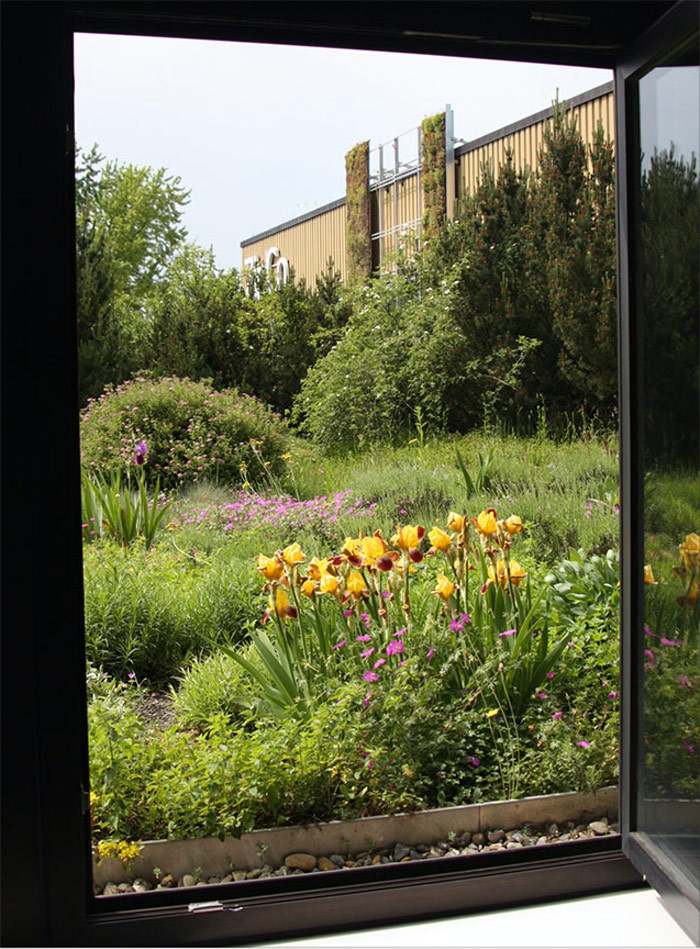
Economical advantages
The initial reaction of many onlookers to green roofs was to judge that plants would damage the protective and insulating screens in the roof and consequential costs. In fact, what happens, if the correct methods are used, is that the garden roof will prolong the life of these insulating materials (protected from sunlight, temperature decreases, reduces temperature variation, etc.). This is one economical advantage.
But the main economic advantage, being one of the strongest arguments for running a green roof, is the large increase in energy efficiency that this constructive solution enables buildings. A green roof reduce by 90% the thermal action of sunlight on the roofs. The temperatures inside the building proved to be less than 3/4 º C when the outside temperature is between 25 and 30 º C (Peck et al. 1999). In climates where air conditioning is essential to maintain decent working conditions, this may be a key reason for adopting a green roof: every 0.5 ° C reduction in temperature inside the building will reduce energy consumption (designed to air conditioners) by more than 8%. In Canada, Environment Canada, found this situation in a typical office building in Toronto that after installing a roof garden with 10 cm thick substrate, reduced by 25% the need to use air conditioning during the warm season. Also in the winter time, there is a saving of energy in buildings with green roofs (very dependent on the substrate thickness), since their insulating characteristic decreases heat loss.
The green roofs and facades not only have the possibility of reducing costs for heating and cooling in buildings; they give also a direct reduction in construction costs because they reduce the need for isolation as well the power of air conditioners. A conventional roof (not garden), in the United States, according to 2002 prices, costs between 43.00 and 90.00 dollars per square meter. The lower value applied to a system that will not last more than 15/20 years without a major repair. The highest value for a system that can last between 30 and 50 years without a repair (Broili, 2002).
Research conducted in Europe suggests that the green roofs doubles the life expectancy of roofing membranes (Peck and Kuhn 2000). The protective properties of green roofs have played a key role in the survival of the old membranes used in the construction of buildings. The Derry and Toms building (already mentioned), located in central London, which maintains a spectacular roof garden since 1938 with a membrane still in good condition (Peck and Kuhn 2000) is a good example.
This new perspective of bioengineering has been developing rapidly in the countries of northern Europe and more recently in the United States of America, with the participation of various specialties: from structural engineers, nursery owners, builders, architects, engineers hydraulics, among others.
• Increase energy efficiency and reduce energy costs
• Thermal insulation: Toronto, Canada, temperature measurements in the insulation membrane in the roof garden model
- Area without roof garden – 70º C
- Area wit the roof garden – 25º C
• Reduce thermal action of sunlight by 90%
• Reduce the need for air conditioners in building by 25%
• Improves the microclimate
• Increased photosynthetic activity that involves:
- increased oxygen production;
- increased recycling of carbon dioxide;
- decrease the green-house effect.
• Reduce heat island effect
• Increases protection against noise;
• It offers a natural habitat;
• Increased biodiversity and ecological niches;
• The green roof as a substitute for lost landscape areas;
• Significant increase of green space in the urban context and decrease the negative impact of mass structures built in urban areas;
• Absorption/filtration of polluting gases and matter in the atmosphere (toxic dust);
• Prevention of fire risk: floral compositions that include succulent plants retard the spread of fire.
• Reduces maintenance costs of buildings
• Increase the usable space;
• Important role in the integrity and sustainability of urban drainage systems: water retention capacity of 10cm substrate:
- 90% of Summer precipitation
- 70% of Winter precipitation
• Decreases the risk of flooding: 50-80% of rainwater is mostly absorbed by plants, another is evaporated and the remainder is conducted for collectors
